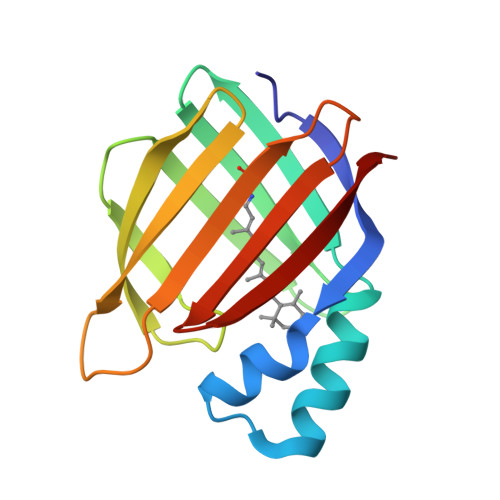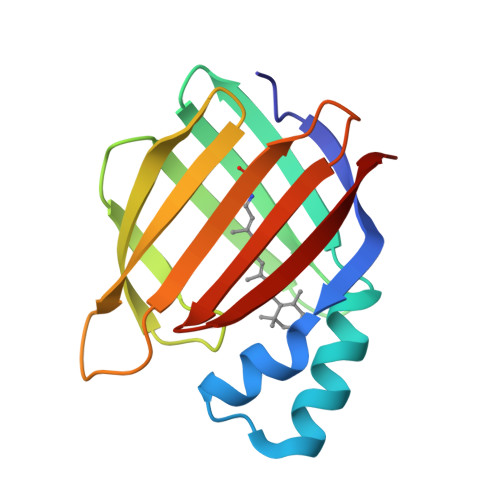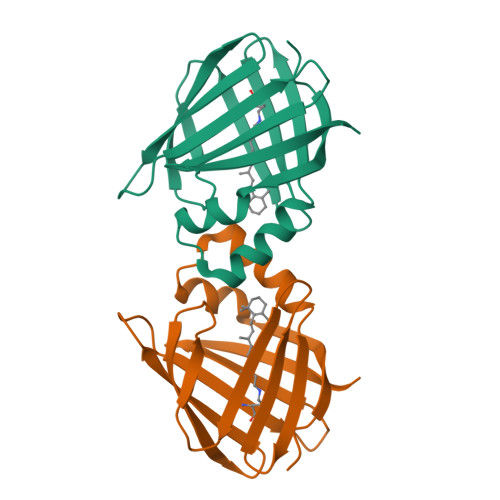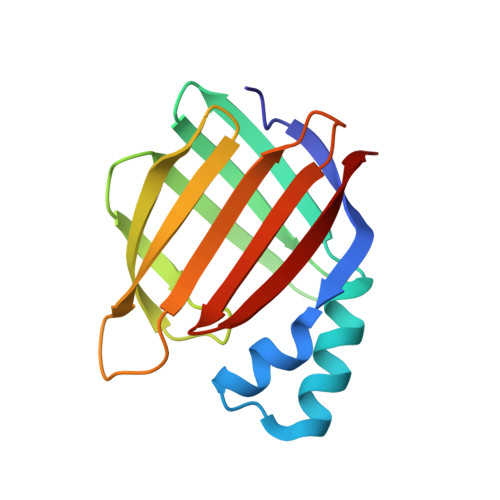Mimicking Microbial Rhodopsin Isomerization in a Single Crystal.
Ghanbarpour, A., Nairat, M., Nosrati, M., Santos, E.M., Vasileiou, C., Dantus, M., Borhan, B., Geiger, J.H.(2019) J Am Chem Soc 141: 1735-1741
- PubMed: 30580520
- DOI: https://doi.org/10.1021/jacs.8b12493
- Primary Citation of Related Structures:
6MOP, 6MOQ, 6MOR, 6MOV, 6MOX, 6MPK, 6MQI, 6MQJ, 6MQW, 6MQX, 6MQY, 6MQZ, 6MR0 - PubMed Abstract:
Bacteriorhodopsin represents the simplest, and possibly most abundant, phototropic system requiring only a retinal-bound transmembrane protein to convert photons of light to an energy-generating proton gradient. The creation and interrogation of a microbial rhodopsin mimic, based on an orthogonal protein system, would illuminate the design elements required to generate new photoactive proteins with novel function. We describe a microbial rhodopsin mimic, created using a small soluble protein as a template, that specifically photoisomerizes all- trans to 13- cis retinal followed by thermal relaxation to the all- trans isomer, mimicking the bacteriorhodopsin photocycle, in a single crystal. The key element for selective isomerization is a tuned steric interaction between the chromophore and protein, similar to that seen in the microbial rhodopsins. It is further demonstrated that a single mutation converts the system to a protein photoswitch without chromophore photoisomerization or conformational change.
Organizational Affiliation:
Michigan State University , Department of Chemistry , East Lansing , Michigan 48824 , United States.


















